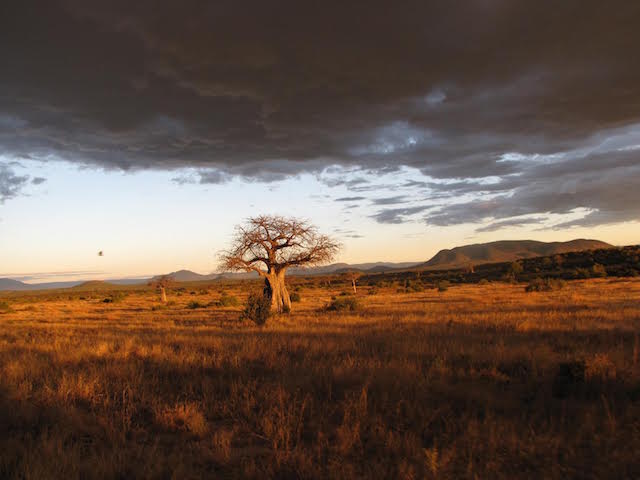
It was a long car ride on a dry, dusty, corrugated road in the highlands of Tanzania, sun beating down on us in our old jeep.
Stepping out of the car felt like we were stepping off of one of those old wooden roller coasters—you know, the ones where you are sure the shaking will pop out the nails holding it together—but we’d finally arrived at our destination.
A small village, the gateway to the “shamba” (farm in KiSwahili, the local language) where we would be working in the coming days. I got out of the car and was immediately greeted by an elderly man whom I had never met before.
He gently took my hand in his, smiled, and held it for a few moments before uttering the most profound words I had ever heard:
Tupo.
We are here.
The simplicity and power of those two syllables, voiced while holding hands and looking one another in the eye, cemented a lesson that had always felt elusive: the importance of living in the present moment. In that moment, absolutely nothing was more true or more important than the simple shared experience of “being here.”
As we all know, or at least intrinsically suspect, there are benefits to mindfulness practices such as meditation, taking deep breaths, walking outside, pausing and simply being in the moment—all various ways of “being here.” The reason, or reasons, why mindfulness is so good are not always clear.
Neuroscientists have been documenting some of the science behind these practices, and have demonstrated that this will literally lead to the creation of more grey matter in your brain! And grey matter—well, it matters! It helps with essential functions such as sensory perception (seeing and hearing) memory, emotions, speech, decision making and self-control. All from just “being here”!
The fact of the matter is that those experiences, those reminders, and those educators who call to attention the “present moment” are around us all the time. The question is, how often do we slow down enough to pay attention? Sure, it sounds great to say “stop and smell the roses,” but when was the last time you actually stopped, and smelled the roses?
Or maybe we don’t have to—there’s probably an app for that.
In a society where there’s a tremendous amount of pressure put on our students to succeed, to be the best, to be competitive, to get into the right school, when and how are we teaching our youth the other tools they will need once they attain that success? Arguably even more important, how are we teaching them to define success for themselves?
I wonder what the educational paradigm in our country would look like if we actively interwove action and reflection, stillness, compassion, breath work, empathy, global awareness and interconnectedness into schooling itself?
I am a huge advocate of having our youth travel after they graduate, because these are all elements of a well-structured gap year, but many students don’t receive this kind of life education until after they graduate.
In the book How Children Succeed, Paul Tough argues that character traits such as grit, social intelligence, gratitude, optimism and self-control will bode better for our children’s future than test scores. If we are not cultivating these traits that will inevitably define who we are—far more than our IQ does—in school, how can our young adults begin to do so?
The film “Race to Nowhere” does a phenomenal job looking at what happens with our current trajectory, when we do not actively embrace practices like these.
While travel is certainly not the only answer, it can be an answer. For me it was a powerful one.
I am not talking about staying at the Four Seasons in the Bahamas, I am talking about the kind of travel that offers countless opportunities to develop those very traits Paul Tough was talking about. The kind of travel that forces you to be in the present moment because you’ve never been there before, you don’t know where you are going, and you can’t ask Siri where to go.
I can not count how many complete strangers in foreign countries have taught me lessons about love, kindness, humility, courage, discipline, fortitude… the list goes on. How simply hearing the stories of others has made me a better person. How many times the sight of something I have never before seen has stopped me completely in my tracks and left me bewildered to the point of being fully immersed in the present moment.
It’s not all unicorns and rainbows, mind you, it is hard; it will test you, push you to your limits, challenge you in new ways. Ways in which you may very well fail, and in doing so teach you more about yourself than you ever thought possible.
Traveling, specifically taking a Gap Year, is in our culture often thought to be reserved for those with the time, privilege and money to pursue it. The good news is that that is quickly changing.
While many of the programs out there do have high price tags, according to a 2013 survey from the American Gap Association a combined total of nearly $2,500,000 was given away in the forms of grants and needs-based scholarships. Combine that with the fact that many great programs also afford the opportunity to receive a full semester of college credit and all of a sudden these experiences are on par, and often less expensive than, in-state college tuition. Unlike a semester at most traditional colleges, however, a semester of travel will call students in to the kind of present-moment awareness that travel demands.
There are many ways to begin slowing down, to be in the moment, to enjoy the myriad of benefits that, for me, travel provides. Regardless of how we come by it, mindfulness, compassion, gratitude, self-control, global perspective and awareness are things we all stand to benefit from greatly.
When those defining characteristics become a part of our mainstream dialogue around education, I will happily sit back, smile and think: tupo.
We are here.
~
References:
Neuroscientists & Meditation
American Gap Association
~
Relephant Read:
Buy a Book, Save a Bookstore.
~
Author: Drew Edwards
Editor: Emily Bartran











Read 2 comments and reply